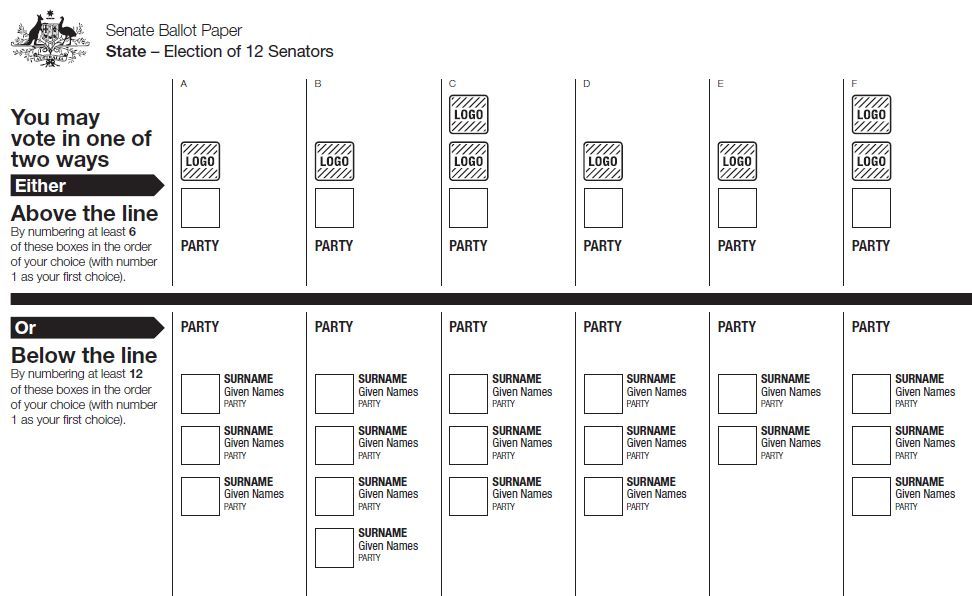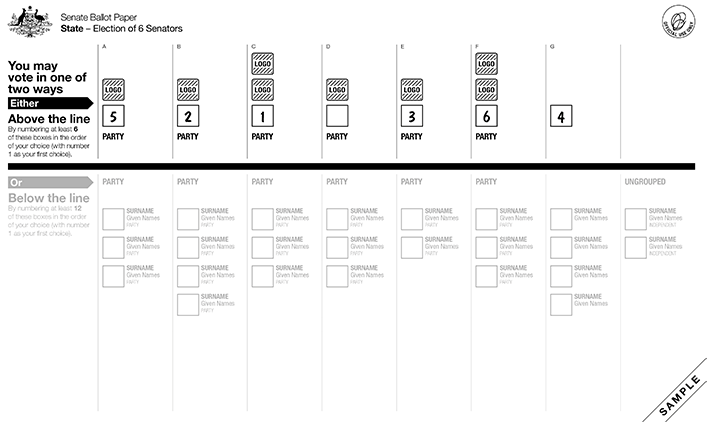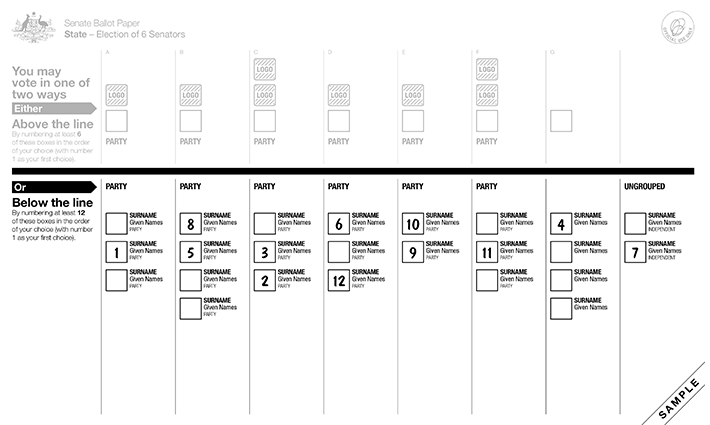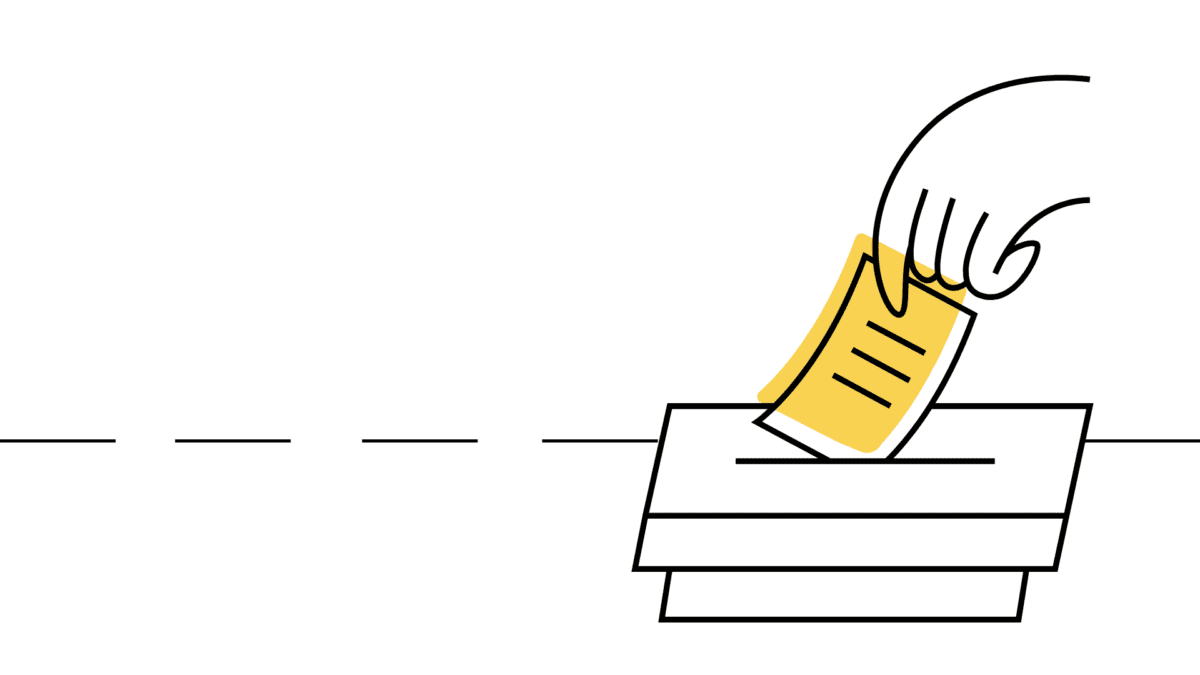Now that voting for the Federal Election has begun, and many students becoming eligible to vote for the first time, Woroni has conducted an in-depth look into one electoral issue many find confusing: voting for the Senate.
Since 1984, voting for the Senate in Australia can be done in two ways: either above the line, or below the line. The “line” in question refers to this line, running down the middle of your ballot:

Up until 2016, voting above the line was largely viewed as undemocratic, as it gave parties a large amount of control over your preferences. However, voting below the line prior to 2016 was incredibly time consuming as it required voters to number every box.
But since 2016, reforms have been introduced to make both options suitable for voters, and representative of their views.
Voting Above the Line
To vote above the line, voters need to number the party boxes (those boxes above the line representing a registered political party who has put forward candidates for the Senate) from 1 to at least 6, although more boxes can be numbered should a voter choose.
Above the line voting works on party preferences, as opposed to individual preferences. We can show how this works using a quick example:
Let’s say, as a voter, you preference the “Pink Party” first and the “Orange Party” second. Let’s say the Pink Party puts forward 4 candidates, in this order:
Candidate A, Pink Party
Candidate B, Pink Party
Candidate C, Pink Party
Candidate D, Pink Party
And let’s say the Blue Party puts forward two candidates, in this order:
Candidate X, Orange Party
Candidate Y, Orange Party
Then, your votes would go to candidates in this order:
- Candidate A
- Candidate B
- Candidate C
- Candidate D
- Candidate X
- Candidate Y
If you wanted to preference Candidate B above Candidate A, for example, you would not be able to by voting above the line – as you only select a party, not individual candidates, by this model.
However, voting for a party above the line only gives that party the ability to distribute your votes amongst their own candidates. If you preference the Pink Party, they cannot assign your vote to the Orange Party, or Yellow Party – they can only distribute your vote amongst their own candidates, in the order they choose.
To ensure your vote is valid if you vote above the line, voters must ensure:
- They number at least 6 boxes, 1 to 6, without repeating a number
- They only vote above the line; and do not put any preferences below the line
An example of a valid above the line vote can be seen below:

Voting Below the Line
To vote below the line, voters must number at least 12 individual candidate boxes, from 1 to 12, although more boxes can be numbered should a voter choose to. Below the line voting works on individual candidate preferences, as opposed to party preferences. We can return to our above example to show how this works:
We know from above the Pink Party has 4 candidates. Let’s add some information about each one, to see why individual candidate voting may be beneficial:
Candidate A, Pink Party, has strong views on climate change
Candidate B, Pink Party, has experience as a small business owner
Candidate C, Pink Party, was a Senator in the previous term
Candidate D, Pink Party, is 22 years old
Realistically, differences between candidates in mainstream political parties may be narrow, as they largely follow a standardised political platform – but candidates do have subtle differences, especially in their prior experience entering politics.
Notably, voting below the line also allows you to select the number of candidates you preference from each party – you need not vote for all 4 Pink Party candidates in this system. You can vote for 1, or 2, or 3. Or you could vote for 2 Pink Party candidates, then 1 Orange Party, then another Pink Party – ultimately, voting below the line views each candidate as a completely separate choice for the voter, allowing whichever order of candidates, or amount of candidates from each party that you wish.
Additionally, independent candidates for the Senate will not always appear above the line – this option is reserved only for groups with more than one candidate (this is why some independents choose to have a running mate). Therefore, let’s add a candidate below the line, called Independent.
So, let’s say you’re a voter who cares about youth representation and climate change. Your preferences, if you vote below the line, may look like this:
- Candidate D, Pink Party
- Candidate A, Pink Party
- Independent
- Candidate X, Orange Party
- Candidate Y, Orange Party
- Candidate C, Pink Party
- Candidate B, Pink Party… (followed by 5 more preferences to form a valid vote)
To ensure your vote is valid below the line, voters must ensure:
- They number at least 12 boxes, 1 to 12, without repeating a number
- They only vote below the line, and do not number any preferences above the line
An example of a valid below the line vote can be seen below:

Which way should I vote?
Primarily, you want to ensure you cast a valid vote. This means no matter which way you vote, make sure you number the correct number of boxes, and ensure you do not vote both below and above the line – this will make your vote invalid.
If you care about party platforms, and not individual candidates, voting above the line may be suitable for you – you can place your vote in the hands of the party you wish to support.
If you care about the views or experience of individual candidates, or wish to control how many
representatives from each party you preference, voting below the line may be suitable for you.
Additionally, if you wish to support an independent running by themselves, you must vote below the line (as they will only appear below the line on the ballot).
For further guidelines on early voting, read Woroni’s recent article on the topic.
We acknowledge the Ngunnawal and Ngambri people, who are the Traditional Custodians of the land on which Woroni, Woroni Radio and Woroni TV are created, edited, published, printed and distributed. We pay our respects to Elders past and present. We acknowledge that the name Woroni was taken from the Wadi Wadi Nation without permission, and we are striving to do better for future reconciliation.
